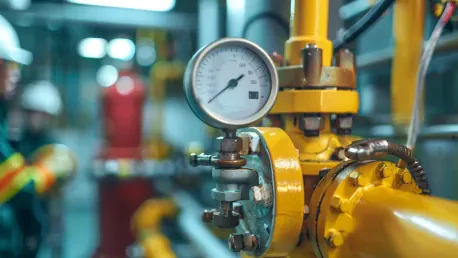The debate over improving the reliability of the energy grid in the Great Lakes states has intensified, especially as the limitations of renewable energy sources like wind and solar become more apparent. In response to these discussions, an article by Joshua Antonini, published by the Mackinac Center for Public Policy, delves into alternative solutions. It highlights the potential and challenges of utility-scale battery storage, small modular nuclear reactors, and natural gas.
Challenges of Utility-Scale Battery Storage
The prohibitive costs and inefficiency of utility-scale battery storage present significant hurdles. Despite advancements in technology, these batteries still fall short in meeting both current and future energy demands. Antonini references projections from Wood Mackenzie and data from the Manhattan Institute to illustrate that while incremental improvements in battery storage technology continue, they remain insufficient to bring about a major transformation.
Furthermore, the reliance on critical minerals for these batteries exacerbates the problem. According to the International Energy Agency, the demand for such minerals is skyrocketing, making economic scaling of battery storage increasingly challenging. Consequently, the expectation that utility-scale batteries alone can solve grid reliability issues is optimistic at best.
Renewable Energy’s Reliability Issues
One of the core problems with renewable energy sources like wind and solar is their inherent variability. Antonini provides concrete examples, such as the Southwest Power Pool’s fluctuations in wind energy output, to underscore this issue. The concept of “dunkelflaute,” a German term describing periods of low wind and solar output, further highlights the inadequacies of relying solely on weather-dependent energy sources to meet consistent electricity demands.
Small Modular Reactors: A Promising Alternative
Small modular nuclear reactors (SMRs) emerge as a promising alternative in the quest for a reliable energy grid. Antonini points to initiatives such as Bill Gates’ TerraPower project and France’s extensive use of nuclear energy as successful examples. SMRs offer the advantages of being safer and more efficient compared to traditional nuclear plants, making them a viable component of a diversified energy strategy.
The Role of Natural Gas
Natural gas stands out as a crucial element in ensuring grid stability. Antonini argues that its ability to quickly ramp up production to meet demand, combined with its high energy density and lower carbon emissions compared to coal, makes it indispensable. Furthermore, natural gas is readily available at relatively low prices, bolstering its case as a necessary part of any comprehensive energy plan for the United States. The flexibility and reliability of natural gas make it an essential counterbalance to the intermittent nature of renewable energy sources.
A Balanced Approach to Energy Strategy
The ongoing debate about enhancing the reliability of the energy grid in the Great Lakes region has gained momentum, particularly as the limitations of renewable energy sources like wind and solar become increasingly evident. With these limitations in mind, experts and policymakers are exploring various alternatives to ensure consistent and reliable power supplies. In response to these discussions, an insightful article by Joshua Antonini, published by the Mackinac Center for Public Policy, critically examines possible solutions beyond just renewable energies. The article underscores the potential and hurdles of different alternatives, such as utility-scale battery storage, which can store excess energy for later use, thus addressing intermittency issues linked to renewables. Additionally, small modular nuclear reactors (SMRs) are highlighted as a promising yet complex option; these reactors offer a smaller, more manageable nuclear energy source, which could be safer and more flexible. Finally, natural gas is discussed as a currently reliable but controversial choice due to its environmental impacts.









